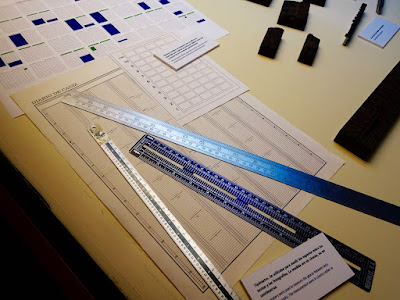I often seem to be on my own in the most marvellous places.
Take the Museo Iberoamericano del Títere - puppet museum - in Cadiz, Spain, on a Sunday morning. There’s no one else, bar a pleasant lady at the front desk, who says, “Es gratis.” This wonderful museum with puppets from all over the world is free.
Next time you’re in Cadiz, go. This place deserves support.
Across the road, it’s the same.
The Museo taller Litográfico - lithography and typography museum - is also empty and free, too.
The current main exhibition - a history of the city’s newspaper - has me back in the New Brunswick paper where, still in my teens, I first tasted real journalism.
That even looks like the sit-up-and-beg typewriter on which I turned out my florid prose. Fortunately, a rather frightening editor spent an inordinate amount of time making it readable.
Long before computers, these are the tools we used - well, people more proficient than me used - to lay out the paper.
And here is much the same Linotype machine - developed in the 1880s - which produced the hot metal type, which in turn printed my much edited first stories. The clank of the presses, smell of the ink, the huge rolls of newsprint and utter joy of holding a real newspaper with my - my! - story … admittedly not on page one, but, yes, there it was just before the want ads and obituaries.
Why does a town a thirtieth Toronto’s size, depending on the math, have such marvellous, free public museums and Toronto can’t even offer a museum of the city itself?
To be fair, Toronto has superb art galleries and museums of international stature - the latest is the stunning Aga Khan Museum. And there are countless small and worthwhile exhibition spaces. However, most, even if ‘public’, charge admission. And again, Toronto - third or fourth largest city in the United States and Canada - does not have a museum devoted to the city, although one may be on city council’s grudging distant horizon.














